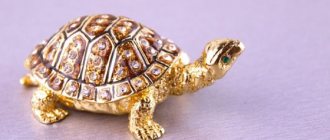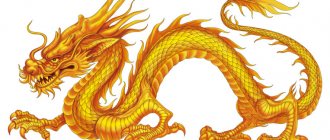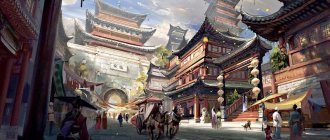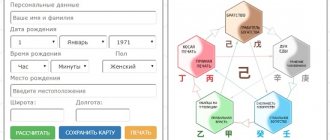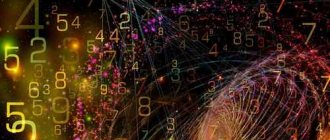Heaven (天 tian) is one of the fundamental categories of Chinese culture. China is often called the Celestial Empire. The Chinese emperor bore the title "Son of Heaven." It was believed that Heaven was giving him a Heavenly mandate to rule. Only the emperor had the right to make sacrifices to Heaven and was responsible before Heaven for the well-being of the people.
Round altar in the Temple of Heaven in Beijing. During the Ming and Qing eras, on the day of the winter solstice, the emperor performed a sacrifice ceremony here in front of the sacred tablet of Heaven.
Sky (tian)
In ancient Chinese texts, the word tian 天 was interpreted in different ways:
- supreme deity, highest power;
- the highest natural principle, a member of the Great Triad “Heaven-Earth-Man”;
- nature;
- natural principle in man, etc.
Sky-tian cannot in any way be correlated with the concept of God of the Abrahamic religions (Judaism, Christianity, Islam). God is a Person, and Heaven is an impersonal force. Tien is the highest world-building force, thanks to which the seasons change, day and night, the harvest ripens, etc.
There are several versions of the appearance of the cult of Heaven in China. According to one of them, the most authoritative, belief in Heaven as a higher power was widespread among the Zhou tribe, who in the 2nd millennium BC. settled on the northwestern outskirts of the Shang-Yin state (1600-1027 BC), later destroyed it and founded their own state under the rule of the Zhou dynasty (1045-221 BC).
The Yin people had a cult of the Supreme Ancestor Shang Di 上帝. Shan-di is translated as “Supreme Ancestor”, “Highest Deity”, “Supreme Ruler”. In ancient texts it is also simply called di 帝. According to some scholars, the character di 帝 originally meant burning a sacrifice, and then transformed into the deity to whom the sacrifice is made. Over time, Shang Di began to be revered as the patron deity of the Shang-Yin state. Under the Zhou people, the cult of Tian-di 天帝 (Heavenly Ancestor) arose, initially endowed with personal traits, and then with the impersonal, abstract Heaven Tian 天.
The hieroglyph tian 天 is already found in Yin fortune-telling inscriptions (2nd half of the 2nd millennium BC). Apparently, it goes back to the image of a person 人 ren, which is crossed by two horizontal lines: 天, that is, a person with outstretched arms (the hieroglyph for “big” 大 da) and the space above his head. Some researchers believe that this is an image of a man with a large head.
人 (ren, person) - 大 (yes, big) - 天 (tian, sky).
... The perfect sages of antiquity, [listening] to loud sounds [in nature] (xiao), comprehended Heaven and Earth with their help and called [these sounds by names or] titles (hao). [They listened] to the singing [of birds and the cries of animals], named them [on this basis] and called them by names. The name (min) expresses, [thus], singing (min) and naming (min). The title (hao) expresses [thus] loud sound (xiao) and comprehension (xiao). So, loud sounds (xiao), with the help of which Heaven and Earth are comprehended, are [names or] titles (hao). The singing [and cries of animals] (min), with the help of which names were given, are names (min)... Names and titles, although they differ in sound, have the same basis. Names and titles are [a way] to penetrate the thoughts of Heaven. The sky does not speak, it forces people to express its thoughts. Heaven does not act, it forces people who are [in its power] to act. Thus, names are [the way in which] perfect sages expressed the thoughts of Heaven. [And therefore], they cannot but be [subjected] to deep consideration.
The receipt by the sovereign of a heavenly command is sent down [according to] the plans of Heaven. Therefore, his title is “Son of Heaven.” He must look to Heaven as to a father and serve Heaven [in accordance with] the path of filial piety. (Dong Zhongshu, “Chun-qiu fan-lu”, chapter “Deep study of the meaning of names and titles”)
Temples and monasteries, palaces and parks
As a rule, these names, being proper names, are not translated into Russian. However, in some cases, you can lose the deep meaning inherent in them.
For example, in the vicinity of Hangzhou there is the famous Buddhist monastery of Lingyin-si灵隐寺, on the territory of which there is the famous rock Feilai-feng飞来峰. I think these names left a lot of questions. The name of the monastery is translated as “Temple of the Refuge of the Soul”, and the rocks are translated as “Flying Rock”. There is at least some clarity now. And, as is usual with the Chinese, for each such case there is its own legend (or more than one) that explains these names.
Another attraction of these places is the Longjing tea , translated as “dragon well”. Surely you were more “hooked” by the Russian translation than by the Chinese name. Although it did not bring much clarity, it certainly aroused interest.
Son of Heaven (tianzi)
In Chinese culture, Heaven was seen as the source of imperial power. Until 1912, the rulers of China bore the title "Son of Heaven" (Tianzi 天子). The emperor was believed to support the interaction between the three members of the Great Triad - Heaven, Earth and people, which is reflected in the character wang 王 - ruler. As the high priest, only he could make sacrifices to Heaven and Earth. His sacrifices to the spirits of the earth and grain ensured the prosperity of the entire Celestial Empire. The emperor also exemplified filial piety by making sacrifices at the Ancestral Temple.
The life of the emperor as the Son of Heaven was clearly regulated. He spent most of his time in his palace, hidden from the eyes of his subjects. Only those close to him had the right to see the emperor. His symbol was the Dragon with five claws.
The Temple of Harvest is the central building of the Temple of Heaven in Beijing. On the day of the winter solstice, the emperors of the Ming and Qing dynasties performed a ceremony of sacrifice to Heaven here.
Common characters in Chinese place names
The following characters are often used in the formation of Chinese place names:
- related to cardinal directions and orientation in space:
- 北 bei "north": Beijing (Beijing) 北京, Beishan 北山
- 东 dong "east": Shandong 山东, Donghuan 东皇
- 南 nan "south": Nanjing 南京, Nanchang 南昌
- 西 si "west": Xining 西宁, Guangxi 广西, Xi'an 西安
- 中 zhong "center": Zhongguo (China) 中国, Zhonghai 中海
- 上 shang "at the top": Shanghai 上海, Shangqing 上清
- 下 xia "below": Tianxia (Celestial Empire) 天下
- describing the world around us:
- 口 kou "mouth", "mouth", "hole": Haikou 海口, Zhangjiakou 张家口
- 龙 long "dragon": Longhai 龙海
- 头 tou "head": Baotou 包头, Shantou 汕头
- 天 tian "sky": Tianjin 天津
- 峰 feng "peak": Ruzhongfeng 祝融峰
- 海 hai "sea", "big lake": Haikou 海口, Shanghai 上海
- 河 he "river": Yellow River 黄河, Hebei 河北
- 州 zhou "land", "region": Lanzhou 兰州, Suzhou 苏州
- 江 jiang "big river": Lijiang 丽江, Jiangxi 江西
- 长 chang "long": Changchun 长春, Changsha 长沙
- 池 chi "lake", "pond": Dianchi 滇池
- 城 cheng "city wall": Qingchen 青城
- 山 shan "mountain": Shanxi 山西, Shandong 山东
- 石 shi "stone": Shilin (stone forest) 石林
- 阳 yang "sun": Luoyang 洛阳, Yangshuo 阳朔
- palaces, temples, monasteries:
- 宫 gong "palace", "residence": Gugong 故宫, Shangqinggong 上清官
- 庙 miao “monastery”, “shrine”: Nanyue Damiao (Great Temple of the Southern Peak) 南岳大庙
- 寺 si "monastery": Lingyin-si 灵隐寺, Shaolin-si 少林寺
- 坛 tan "altar": Tiantan (Temple of Heaven) 天坛, Zhitian (Altar of the Sun) 日坛
- 园 yuan "park": Yiheyuan 颐和园, Yuanmingyuan 圆明园
- expressing peace and tranquility:
- 安 an "peace", "harmony": Xi'an 西安, Anhui 安徽
- 宁 ning “quiet”, “calm”, “peaceful”: Yinging 伊宁, Nanning 南宁, Liaoning 辽宁
- names of kingdoms and dynasties:
- 汉 han "Han", "Chinese": Wuhan 武汉, Hanshui 汉水
- 秦 qin "Qin": Qinhuangdao 秦皇島
- 国guo “kingdom”, “principality”: in the names of ancient kingdoms and principalities: Chu-guo (Kingdom of Chu) 楚国, Lu-guo (Kingdom of Lu) 鲁国
Of course, this is not an exhaustive list.
Map from Shanhaijing (“Catalogue of Mountains and Seas”)
Basic colors and shades in Chinese with translation
Let's start by repeating the Chinese names of the primary colors:
- black -黑色(hēi sè)
- yellow –黄色(huáng sè)
- orange -橘色(jú sè)
- red -红色(hong sè)
- brown -棕色(zōng sè)
- violet, purple -紫色(zǐ sè)
- green -绿色(lǜ sè)
- blue, blue -蓝色(lán sè)
- white -白色(bái sè)
To convey the difference in color intensity, muting or enhancing a shade, the Chinese use two hieroglyphs:
- light -浅(qiǎn);
- dark -深(shēn).
For example, light yellow would be浅黄(qiǎn huáng) and dark green would be深绿(shēn lǜ).
Black color 黑色 (hēi sè)
The inhabitants of the Celestial Empire considered the color black to be the king of all colors . In their eyes, he personified immersion in the secrets of understanding the world and was associated with the water element and yin energy. But in modern China it has become a symbol of sadness, evil and failure. You should not wear black clothes to a wedding, first date or funeral. And in everyday life, black clothes are worn mainly by older people.
Shades of black:
coal black -煤黑(méi hēi);
shade of black tin -铁黑(tiě hēi);
color of black soil -土黑(tǔ hēi);
resin, black ink color -墨黑(mò hēi).
Chinese idioms associated with the color black:
颠倒黑白(diān dǎo hēi bái) - “to speak in black and white”, to distort facts, to present them in a false light.
月黑风高(yuè hēi fēng gāo) - “strong wind on a black night” is an allegorical description of a risky or difficult situation.
起早贪黑(qǐ zǎo tān hēi) - “from early morning until dark” is most often used in the sense of “working hard.”
Yellow color 黄色 (huáng sè)
In Ancient China, it was considered the color of luck, power and wealth , a little later becoming a symbol of imperial power - no one except the emperor was allowed to wear yellow clothes. In addition, this color was associated with the Celestial Empire itself and one of the great Chinese rivers - the Yellow River ( Yellow River ), which has a specific color of water due to admixtures of loess and clay.
The mythical progenitor of Chinese civilization, who is credited with the creation of many different crafts, inventions and the authorship of some treatises that formed the basis of the national Chinese religion - Taoism, is considered Emperor Huang Di, which is also translated as “ Yellow Emperor ”. But in today's China, yellow is a sign of age-restricted information , or, more simply, pornography.
Shades of yellow:
lemon yellow -柠檬黄(níng méng huáng);
apricot, yellow-orange -杏黄(xìng huáng);
golden yellow, golden -金黄(jīn huáng).
Chinese idioms related to the color yellow:
青黄不接(qīng huáng bù jiē) - “yellow and green do not match.” The original meaning of the expression was that there would not be enough grain from the old harvest to survive until the new one. Over time, this phrase acquired a meaning close to ours “cannot make ends meet”, as they say about any limited resources, be it money, raw materials or people.
人老珠黄(rén lǎo zhū huáng) - “a person is like a yellowed pearl” - this is what they say about old people. About a woman of advanced age, you can hear “woman with a yellow face” -黄脸婆(huáng liǎn pó).
明日黄花(míng rì huáng huā) - “chrysanthemums after the end of the Chrysanthemum Festival”, i.e. what has already gone out of fashion, is no longer needed, is outdated.
黄金周(huáng jīn zhōu) - “golden week” - this is the name in China for two periods of holidays that last 7 days - Chinese New Year and Foundation Day of the People's Republic of China.
Orange color 橘色 (jú sè)
In China, the color orange (橘色) is associated with autumn and a rich harvest, and therefore represents abundance and prosperity .
Shades of orange:
salmon, orange-pink -橙红色(chéng hóng sè);
persimmon color -柿子橙(shì zǐ chéng);
orange -热带橙(rè dài chéng);
honey -蜜橙(mì chéng).
Red color 红色 (hóng sè)
The color red - in Chinese红色(hóng sè) - occupies one of the most important places in the cultural code of China . It embodies the life-giving power of fire and personifies success and vitality, promises prosperity and good luck . This is the main color of the Chinese New Year, which is also called the Spring Festival, as well as the traditional Chinese wedding ceremony. On such holidays, it is customary to give money in a red envelope. The Chinese are sure that such a gift will protect against evil spirits and bring good luck.
you cannot write letters, notes, or even take notes with red ink . The origins of this ban lie in those distant times, when the names of those sentenced to execution were written down first in chicken blood, and a little later - in red ink. It is believed that ink of this color is still used only if they want to curse the recipient or inform him of the death of a loved one.
Shades of red:
scarlet, bright red, cinnabar color -朱红(zhū hóng);
brown-red, dark burgundy -枣红(zǎo hóng);
paprika or chili pepper color -辣椒红(là jiāo hóng);
pink -粉红(fěn hóng);
dark red, burgundy -深红(shēn hóng).
Chinese idioms related to the color red:
红红火火(hóng hóng huǒ huǒ) is a saying that literally translates as “red is red, fire is fire.” It means that life is rising uphill, flaring up like a bright flame.
看破红尘(kàn pò hóng chén) - “look through the crimson dust”, i.e. give up worldly passions and desires, recognize the frailty of existence and follow the path of a Buddhist monk.
红杏出墙(hóng xìng chū qiáng) - “red apricot grows through the wall”, this is what they say about an unfaithful wife dating a secret lover.
You can also add shades of brown here:
brown -褐色(hè sè);
brick, reddish brown -红棕(hóng zōng);
bronze, golden brown -金棕(jīn zōng).
Violet (purple) color 紫色 (zǐ sè)
In Ancient China, this color was associated with divinity and immortality, and was therefore considered the color of luxury and nobility. Only high officials or representatives of the imperial family of the Middle Kingdom could use it in clothing. Today it is very popular among young Chinese as the color of romance and love.
Shades of purple:
purple -淡紫色(dàn zǐ sè);
purple-gray, grape -葡萄紫(pú táo zǐ);
lilac -紫丁香色(zǐ dīng xiāng sè);
the color of thunderclouds, dark purple -暗紫(àn zǐ).
Chinese idioms related to violet and magenta:
万紫千红(wàn zǐ qiān hóng) - “a lot of purple and red” - a riot of colors, bright multicolor, something multifaceted and colorful. It is even used to describe rapidly developing industries, literature, traditional crafts and any other fields of activity.
紫气东来(zǐ qì dōng lái) - “purple wind that blows from the east.” Means a good omen, a prediction of happiness.
Green color 绿色 (lǜ sè)
Considered in China to represent nature, rebirth and renewal . In the circle of five elements it corresponds to a tree. One of the national symbols of the Celestial Empire is green jade, to which Chinese philosophers attributed five virtues corresponding to the best qualities of a person: the soft shine of the stone embodies mercy; his firmness is a symbol of justice and moderation; translucency symbolizes honesty, and purity is a sign of wisdom. But green can also have a negative meaning - it can be associated with betrayal or illness .
Shades of green:
light green, pea green color -豆绿(dòu lǜ);
olive -橄榄绿(gǎn lǎn lǜ);
green tea color -茶绿(chá lǜ);
pale green, apple green color -苹果绿(píng gǔo lǜ);
brown-green, the color of green algae -水草绿(shǔi cǎo lǜ);
grassy green, khaki color -草绿(cǎo lǜ).
Chinese idioms related to the color green:
花花绿绿(huā huā lǜ lǜ) - “many colors on green”, i.e. we are talking about something multi-colored, motley, bright.
红男绿女(hóng nán lǜ nǚ) - “guys in red and girls in green,” an expression about a motley crowd of smartly dressed people.
戴绿帽子(dài lǜ mào zǐ) - “wears a green hat” - this is what they say about a deceived man whose wife has cheated on him.
脸都绿了(liǎn dōu lǜ le) - “green face”, referring to a sickly unhealthy appearance.
Blue (cyan) color 蓝色 (lán sè)
Blue in Chinese culture is the color of the sky and sea, the color of open space and immortality . This color is a symbol of health, prosperity, harmony, but at the same time an example of the fickleness of the wind , which can not only bring coolness, but also cause destruction. The color blue and its shades were widely used in Ancient China to paint the most expensive porcelain, highly valued in China and beyond.
Initially, the concepts of blue and green colors practically merged in China. The hieroglyph that is used today to denote the color blue used to mean the color “indigo,” and the modern hieroglyph for green was used only to describe the color of green plants.
Shades of blue:
pale blue, light blue color -淡蓝色(dàn lán sè);
grayish blue -蓝灰色(lán huī sè);
azure, blue -蔚蓝色(wèi lán sè);
sea green color -海洋蓝(yuè guāng lán).
Chinese idioms related to the color blue:
青出于蓝而胜于蓝(qīng chū yú lán ér shèng yú lán) - “blue paint made from indigo is bluer than indigo” the proverb speaks of a situation when a student surpasses a teacher, and the younger generation is ahead of its predecessors in some way.
White color 白色 (bái sè)
Since the Song Dynasty (960-1279 AD), white has been a symbol of mourning and grief . Therefore, it is not customary for the Chinese to wear white clothes and jewelry in everyday life, or to give white flowers or cash gifts in white envelopes. The “white envelope”白包(bái bāo) is used only when transferring material support to the family of the deceased. The white color itself symbolizes withering and old age, going beyond the world, the completion of the cycle .
Shades of white:
creamy -奶油色(nǎiyóusè);
snow-white -雪白色(xuěbáisè);
pearly white -珍珠白(zhēn zhū bái);
white jade color -玉石白(yù shí bái).
Chinese idioms associated with the color white:
白璧无瑕(bái bì wú xiá) - “white jasper without a single spot”, this is what they say about flawless, crystal clear, perfect and immaculate.
唇红齿白(chún hóng chǐ bái) - “red lips and white teeth”, the meaning is close to the Russian “blood and milk”, i.e. a healthy and beautiful person.
Color qing 青 (qīng)
There is also a unique color in Chinese culture called qing 青, the translation of which often depends on the context. The character青(qīng) can mean bright blue, dark blue, bright green and even black. It conveys a whole palette of shades from dark gray to blue and green. Traditionally, qing is considered a type of blue, but it is a more complex color, combining several shades of gray-blue with green. The use of this color in porcelain painting has become a hallmark of fine porcelain products created in China.
Other colors and shades
According to scientists who analyzed the color spectrum, there are more than 10 million different colors and shades, not all of which can be classified into one group or another. But at the same time, they are used by designers when creating fashionable clothes and interiors, by writers in literary descriptions, and appear in blogs and on the pages of glossy magazines. Here are some of these colors and shades in Chinese :
coffee -咖啡色(kā fēi sè);
denim -牛仔色(níu zǎi sè);
fluorescent, neon - 荧光色(yíng guāng sè);
golden, golden -金色(jīn sè);
silver, silvery -银色(yín sè);
rainbow -彩虹色(cǎi hóng sè);
adzuki paste color -豆沙色(dòu shā sè). This sweet red bean paste is widely used in desserts. It has an unusual lilac-brown color with a pinkish tint, which has become one of the most popular lipstick shades.
To practice correctly pronouncing the names of primary colors in Chinese and constructing sentences using them, we suggest watching a short video.
Colors in Chinese will help in understanding the culture and traditions of China. The article provides many examples of color shades in Chinese and Chinese idioms using them.

